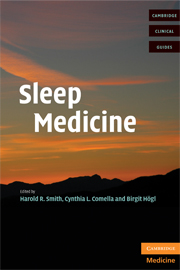
- Cited by 5
-
Cited byCrossref Citations
This Book has been cited by the following publications. This list is generated based on data provided by Crossref.
Bennett, Shoshana Alpert, Martin Kubulins, Vilnis and Hansler, Richard L. 2009. Use of modified spectacles and light bulbs to block blue light at night may prevent postpartum depression. Medical Hypotheses, Vol. 73, Issue. 2, p. 251.
Shahali, Hamze and Amirabadi Farahani, Azade 2013. Jet Lag in Military and Civil Aviation: A Review Study. Journal of Archives in Military Medicine, Vol. 1, Issue. 1, p. 13.
Ebrahimnegad Shirvani, Mahbubeh Tayebi, Sirous Khashayar, Patricia and Pourabbasi, Ata 2015. The Relationship Between Nasal Septal Deviation, Daytime Sleepiness and School Performance Among Iranian High School Students: A Pilot Cross-Sectional Study. International Journal of School Health, Vol. 2, Issue. 3,
Taghavi, F. and Moosavi-Movahedi, Ali A. 2019. Plant and Human Health, Volume 2. p. 1.
Roumelioti, Maria-Eleni Argyropoulos, Christos P. and Unruh, Mark L. 2021. Psychosocial Aspects of Chronic Kidney Disease. p. 183.
- Publisher:
- Cambridge University Press
- Online publication date:
- August 2009
- Print publication year:
- 2008
- Online ISBN:
- 9780511545085


